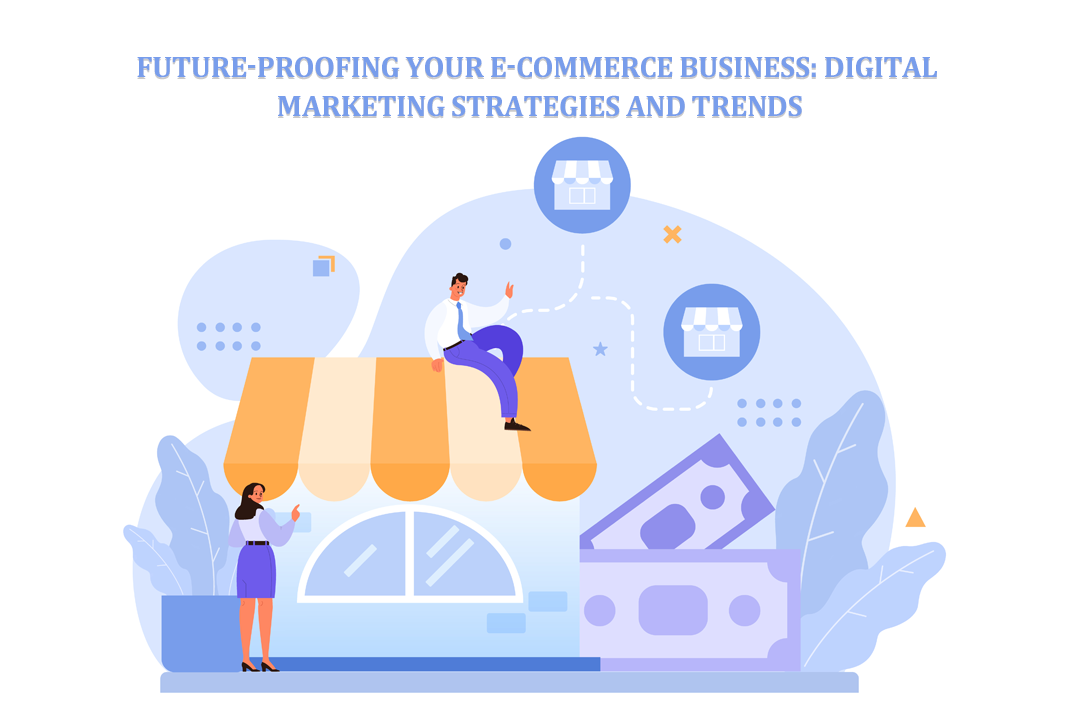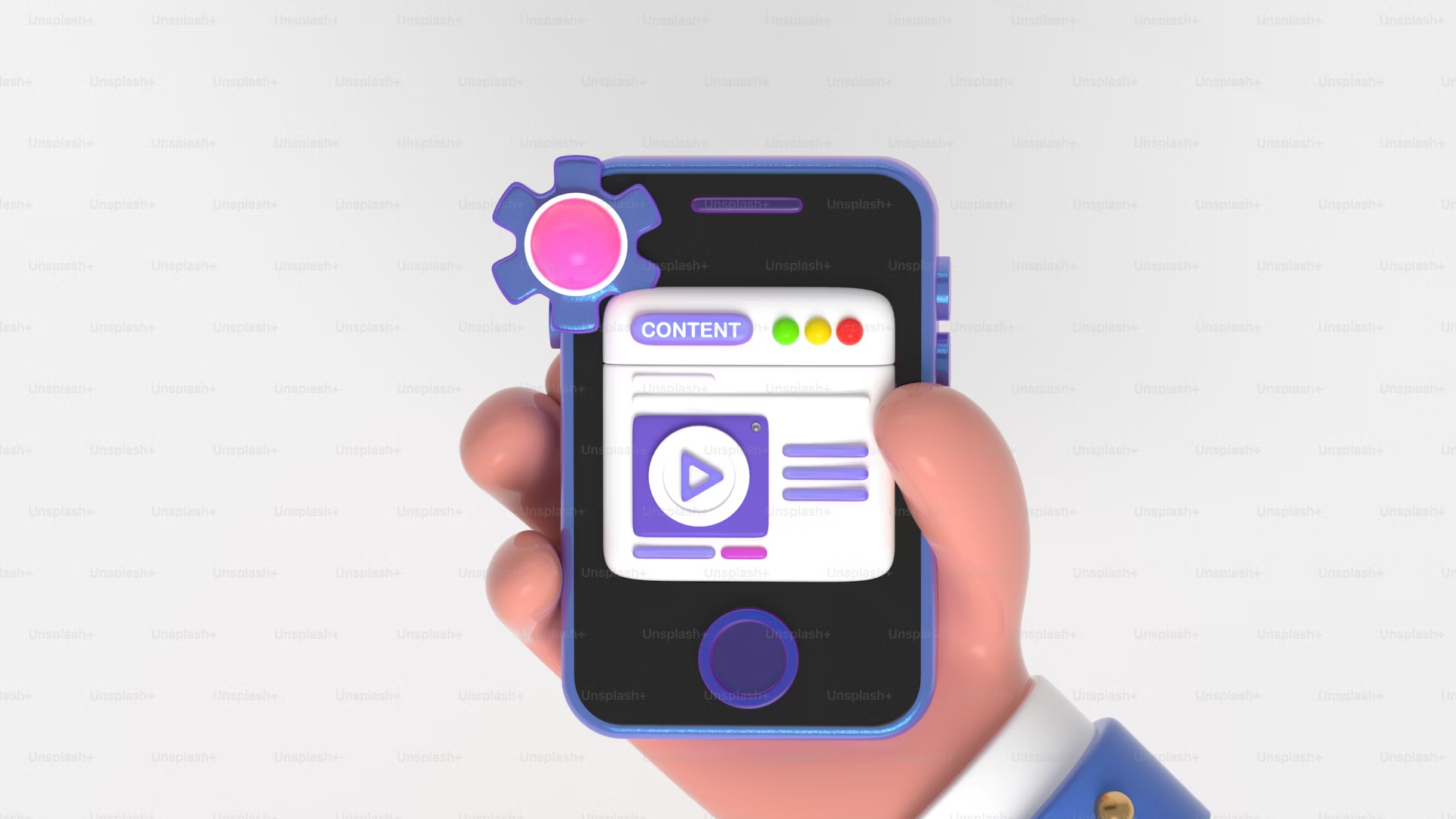Future-Proofing Your E-commerce Business: Digital Marketing Strategies and Trends
How can one maintain a competitive e-commerce business in an ever-changing digital landscape? The answer is future-proofing your business with innovative digital marketing strategies and being up-to-date with the latest trends.
Businesses must change as technology advances and consumer behaviors change to stay relevant. In this article, we will discuss crucial digital marketing strategies and trends that will enable your e-commerce business to succeed in the future.
These observations would help you familiarize yourself with the tools necessary for thriving in a dynamic world of e-commerce, such as leveraging AI, data analytics, social commerce, and personalization.
1. Leveraging Artificial Intelligence (AI)
AI is transforming e-commerce. AI-powered tools and algorithms can scan massive data sets to reveal client preferences. AI-powered marketing offers tailored suggestions, customer support chatbots, and automated email marketing. Technology improves consumer experience, increasing engagement and conversion rates. AI can anticipate buying habits and recommend goods that match consumer tastes, personalizing the shopping experience. AI helps e-commerce businesses optimize processes, boost consumer happiness, and remain ahead of the competition.
2. Data Analytics for Informed Decisions
Data rules the digital era. E-commerce companies collect massive amounts of data every day, including WooCommerce show remaining stock, customer interactions, purchase history, and browsing habits. Analytics may inform your marketing approach from this data. Analytics analyze patterns, improve pricing, and understand client demographics. Data-driven decisions improve marketing efforts and ROI. Tracking items that are regularly seen but not purchased might help improve product descriptions and prices. Data analytics improves marketing targeting, efficiency, and effectiveness, increasing revenue and consumer loyalty.
3. Embracing Social Commerce
Social media platforms go beyond communication to boost purchases. E-commerce integrated with social networking, or social commerce, is a developing trend that streamlines buying. Instagram, Facebook, and Pinterest let companies promote items, interact with customers, and make direct sales. Create shoppable posts, use influencers, and run targeted advertisements to use social commerce. This strategy boosts brand awareness and community. Social commerce helps your business reach more customers, improve website traffic, and increase conversions.
4. Personalization and Customer Experience
E-commerce is competitive; thus, customization is crucial. Customers want personalized experiences. Personalization may be done through email campaigns, product suggestions, and content. By evaluating client data, businesses may develop unique shopping experiences encouraging repeat purchases. Sending birthday discounts or recommending goods based on browsing history can boost customer happiness. Personalization promotes customer experience, engagement, and revenue, making it essential for future-proofing your e-commerce firm.
5. Mobile Optimization
Mobile optimization is crucial for e-commerce success as smartphone use rises. A mobile-friendly website makes buying on smartphones and tablets easy. This includes responsive design, fast loading, and simple navigation. Apps may make shopping more convenient and personalized with mobile optimization. Push alerts, mobile payments, and in-app exclusive discounts boost purchases. Optimizing your e-commerce platform for mobile devices as mobile commerce grows can help you attract and keep customers in a competitive market.
6. Influencer Marketing
Influencer marketing has become a significant tool for company reputation and audience growth. Influencers that support your brand can boost your e-commerce company. Influencer endorsements may increase traffic and purchases because followers trust them. Find specialized influencers and form genuine collaborations to use influencer marketing. Influencers may increase brand awareness and attract customers through sponsored posts, reviews, and freebies. This method boosts brand visibility and creates a devoted consumer base that trusts and uses your items.
7. Video Content and Live Streaming
Video material enhances customer engagement and product promotion. YouTube, Instagram, and TikTok allow users to generate engaging product demos, customer testimonials, and instructions. Live streaming is popular for real-time consumer contact. Live product premieres, Q&As, and behind-the-scenes tours boost sales. Video footage shows items in action, creating trust and eliminating ambiguity. Video and live streaming may raise your marketing plan’s consumer engagement and conversion rates.
8. Voice Search Optimization
Voice search optimization is crucial as smart speakers become more popular. It entails adapting website content to voice inquiries’ conversational tone, which includes natural language, long-tail keywords, and short responses to popular inquiries. Voice search is common for local queries, so local SEO is essential. Keeping your Google My Business information correct and up-to-date will boost your voice search rankings. Preparing for voice search can boost your online exposure and attract new clients.
9. Sustainable and Ethical Practices
Consumers increasingly consider ethics and sustainability while buying. Sustainable and socially responsible e-commerce enterprises may attract and maintain mindful customers. This includes ethical sourcing, sustainable packaging, and honest business practices. Marketing strategies and product descriptions that emphasize sustainability may develop trust and loyalty. Customers may also appreciate eco-friendly activities like carbon offset programs or philanthropic gifts. Adding sustainability to your business strategy may attract eco-conscious customers and set you apart.
10. Omni-Channel Marketing
Omni-channel marketing integrates consumer experiences across channels. This method lets Customers connect with your business regularly online, in-store, and on social media. Omni-channel marketing integrates email, social media, mobile applications, and shops. This method improves customer convenience and engagement, increases revenue and brand loyalty, and allows customers to buy online and pick up in-store, combining e-commerce and brick-and-mortar benefits. An omnichannel approach may provide your e-commerce consumers with a seamless purchasing experience.
11. Chatbots and Customer Support
Excellent customer service is critical to e-commerce success. Instant, 24/7 customer service using chatbots is affordable. These AI-powered applications can answer FAQs, track orders, and handle refunds. Chatbots speed up responses, boost customer satisfaction, and free up agents for more challenging questions. Chatbots on your website and social media guarantee fast, accurate client service. Technology will make chatbots more intelligent, providing individualized help and improving customer service.
12. Email Marketing
Email marketing is still a top e-commerce marketing strategy. Personalized emails enhance revenue, engagement, and customer connections. Email lists may be segmented by consumer activity and preferences for targeted communications. Customized product recommendations and abandoned basket emails can promote repeat business. Regular mailings may maintain customer engagement, including deals, new products, and helpful material. Email marketing can develop consumer loyalty and long-term success for your e-commerce firm.
13. Augmented Reality (AR) Shopping
Augmented Reality (AR) lets users perceive things in their environment, changing online buying. With AR technology, customers may visually try on items, check how furniture fits, and test cosmetics. This immersive experience decreases buying hesitation and boosts confidence. AR elements on your e-commerce platform may set you apart and add value. As it becomes more accessible, AR technology will make e-commerce more dynamic and entertaining.
14. Subscription Models
Subscription models are attractive for recurring income and consumer loyalty. Subscriptions for beauty, pet, and gourmet items may save customers time and give businesses steady revenue. Subscription models can provide unique items, discounts, and content. Businesses may customize subscription programs by evaluating client preferences and habits. This method improves client retention and provides data for customization and marketing. Adopt subscription models to improve consumer happiness and build your e-commerce firm.
Conclusion
To future-proof your e-commerce firm, be proactive with digital marketing methods and trends. AI, data analytics, social commerce, and customization improve customer experience and revenues. Mobile, influencer, video, and voice search optimization are vital in a changing industry. Sustainability, omnichannel, chatbot, and email marketing promote trust and loyalty. AR and subscription models offer distinct value and ongoing revenue. With these methods and ongoing trend monitoring, your e-commerce firm may prosper in the ever-changing digital world.
How to Use SEO and SEA Together in Search Engine Marketing
In digital marketing, search engine marketing (SEM) plays a critical role in improving online…
0 Comments10 Minutes
Content Marketing Growth Hacks: Real Shortcuts to Drive Traffic
Are you still lagging in content marketing? Sticking to these old strategies seems…
0 Comments10 Minutes
How to Build a Strong Local Following Using Social Media Marketing
In the days of likes, shares, and stories, local businesses have a golden opportunity to create…
0 Comments9 Minutes
Why WooCommerce is the Best Choice for Your Online Store?
WooCommerce stands out as a top option for anyone looking to build an online store. This platform…
0 Comments8 Minutes
How to Use AI-Powered SEO Tools for WordPress eCommerce
SEO is a critical factor in the success of any e-commerce WordPress store. As competition…
0 Comments11 Minutes
Why Short-Form Videos Are the Future of Content Marketing
Your Instagram customers spend over 50% of their time watching short-form videos and reels. Rather…
0 Comments12 Minutes
The Role of Digital Marketing in Business Growth
Online marketing touches every aspect of a business, whether it is initiating the idea or for an…
0 Comments3 Minutes
AI Meets Authenticity: Balancing Automation and Human Touch in Content Marketing
Is your brand starting to sound like a robot? In a world where algorithms write faster than any…
0 Comments8 Minutes








